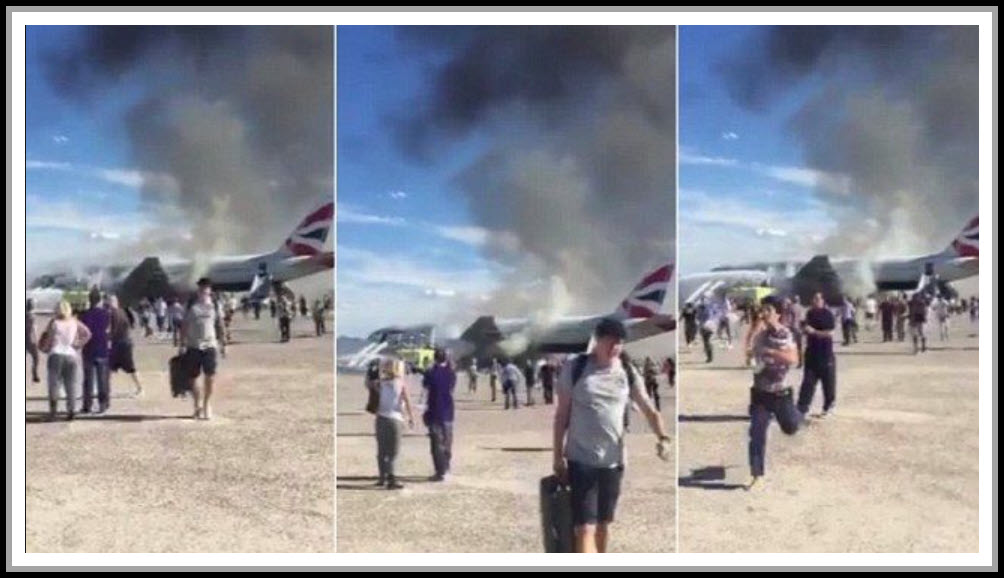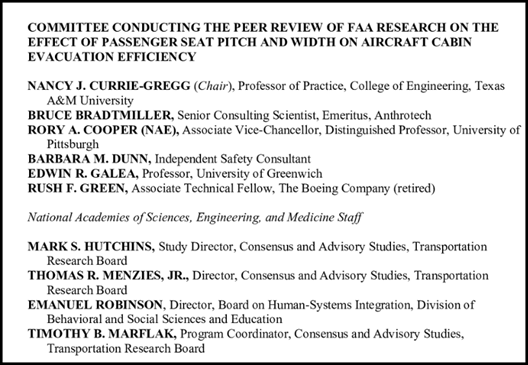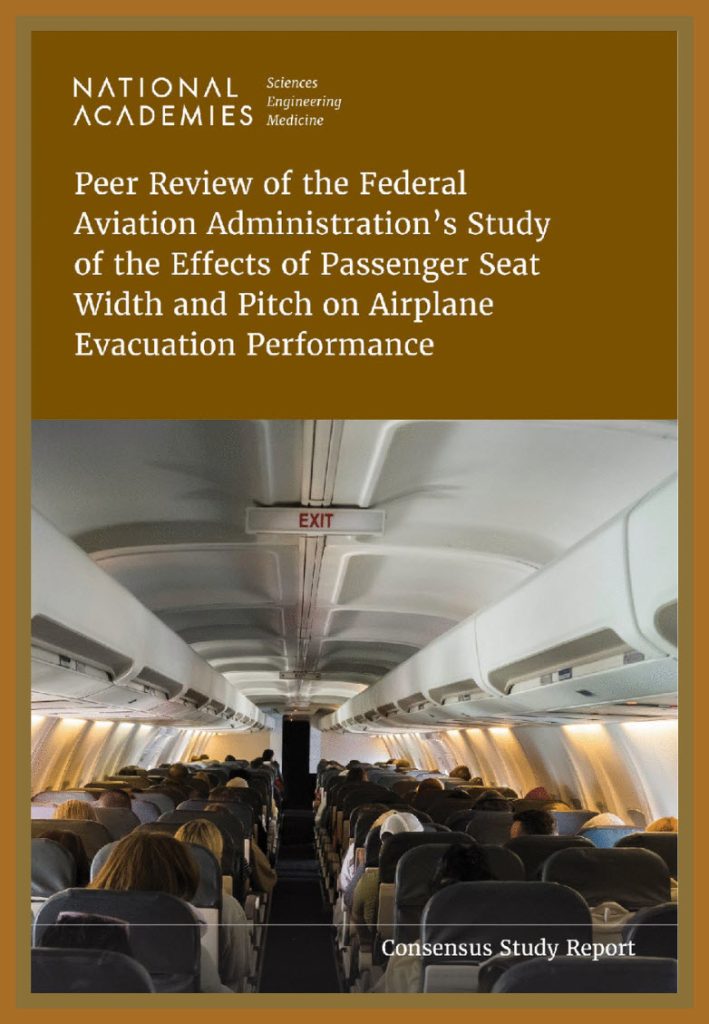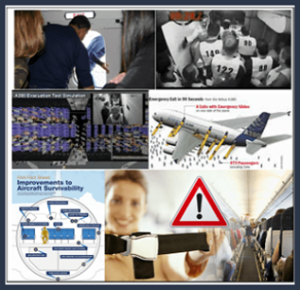CAMI’s gets Seat Safety advice from National Academies on width/pitch test

For seven years, Congress has demanded that the FAA study the ability of passengers to evacuate from commercial airliners during an emergency. The argument has been that with smaller seats, decreased pitch and a changing passenger population (heavier and limitations) cannot meet the FAA’s 90◌ rule. The dialogue included some casting aspirations that the real issue was comfort, not safety.
The National Academies of Sciences, Engineering, and Medicine {NASEM} was chartered by the FAA’s Civil Aerospace Medical Institute (CAMI) to peer review their 2021 study that concluded that the current cabin seating requirements “can accommodate and not impede egress” for 99% of the general U.S. population.
Determination to issue a certificate of airworthiness to a commercial aircraft involves multiple assessments of safety- succinctly, but not a complete list:
the risks of a specific part or system and the interaction of various aspects of the plane- i.e. powerplant-fuel-emissions-thrust-control- susceptibility to stall- containment if a blade or discus separates—to name a few.
The FAA CAMI evacuation evaluation followed what the agency has used for many systems—PERFORMANCE BASED tests. The study concluded that the evacuation performance worked. The leader of that study was Susan M. Jay, Ph.D., MPH[1]
The study included a list of its outside assistance:
-
- Experts brought in to assure objectivity-
- “… the FAA chartered the Emergency Evacuation Standards Aviation Rulemaking (ARC), which met between October 2019 and May 2020. The ARC included dozens of aviation stakeholders, including the National Transportation Safety Board (NTSB), the European Union Aviation Safety Agency, FlyersRights, the Allied Pilots Association, and the Association of Flight Attendants …”
- What did the ARC recommend that CAMI do?
- “The ARC reviewed nearly 300 real-world[2] evacuation events that occurred over the previous decade. The ARC found the overall level of safety in emergency evacuations to be very high, but made 27 recommendations to the FAA related to how the safety of such evacuations could be improved
- In addition to the §337 mandated items, the ARC decided to consider factors identified by the FAA as potentially affecting an evacuation.
CAMI’s went beyond reporting its test results, there were 11 such suggestions but here is the aegis of the NASEM peer review:
→ The FAA recommends implementing a process for periodic review of evacuation-related standards that are based on demographics and anthropometry, such that as those characteristics evolve, the FAA can anticipate the need for changes to the requirements and update the requirements when necessary. This includes regulatory requirements such as those for aisle width and exit size, as well as guidance for dimensions of seat and assist spaces.←
As explained by Sean Broderick (next part of post), NASEM engaged a blue-ribbon panel:

The team was led by the incredibly qualified Dr. Nancy Currie-Gregg[3]
These experts did not find fault with the CAMI test in and of itself, rather to reach the level of certainty, they concluded, among a number of findings:
That there is a “need to undertake an EXTENSIVE series of additional evacuation trials or COMBINATION OF SEAT ROW EXIT TRIALS and COMPUTER-BASED EVACUATION that specifically take passenger body size into account as an independent variable.”
CAMI will likely follow the advice of the peer panel which the FAA team sought and a new set of tests will be performed.
Expert Panel Validates Criticism Of FAA Evacuation Study
Sean Broderick July 02, 2025

The FAA’s bottom-line conclusion from a series of evacuation trials that found current seat sizes are sufficient to ensure most of the U.S. population will not be impeded during an evacuation is not supported by the tests, an expert panel found.
The conclusions from a National Academies of Sciences, Engineering, and Medicine {NASEM} peer-review of the FAA’s trials undercut a 2021 report developed in response to lawmakers’ claims that current seat dimensions are unsafe and need to be revised. The 2021 report was based on experiments and evacuation demonstrations conducted in 2019 and 2020 and overseen by the FAA’s Civil Aerospace Medical Institute (CAMI). The results led the FAA to conclude that current cabin seating requirements “can accommodate and not impede egress” for 99% of the general U.S. population.

But that position “is not supported by the design and results of the research project,” the peer review group said in its report, made public July 1.
“The committee finds that the key conclusion in CAMI’s report that current airplane seating configurations should not impede the evacuation of 99% of the general U.S. population is not supported by the design and results of the research project,” the peer review said. “To make such a definitive claim, CAMI would need to undertake an extensive series of additional evacuation trials or combination of seat row exit trials and computer-based evacuation that specifically take passenger body size into account as an independent variable.”
Among CAMI’s shortcomings: evacuation demonstration participants were aged 18-60 and none had any acknowledged physical limitations. Anyone not meeting these criteria was excluded to ensure the trials would be as safe as possible—a move that was criticized in formal public comments on the final report.
A more nuanced issue was CAMI’s emphasis on whether participants could sit in configurations of various dimensions, not whether the dimensions affect how quickly people could get out into the aisles. CAMI found that the smallest seats it used, with a 26-in. pitch, were too small for too many people. It settled on a 28-in. pitch for the trials.
CAMI then focused on total evacuation times, not whether seat row dimensions affect those times. Its theory: most of an evacuation’s time is spent lined up to get out an exit.
“CAMI reasoned … that because all passengers onboard an airplane could get into their seats, they should be also able to get out of their seats, and that any additional time required to do so because of limited seat space should not affect the evacuation flow overall,” the committee report said. “In the committee’s view, the seat experiments represented a missed opportunity to learn more about the effects that seat pitch and width could have on a person’s ability to exit a seat and seat row.”
While new trials are necessary to meet the original study’s objective, valuable information can be gleaned by additional analysis of CAMI’s current data. Among the RECOMMENDATIONS: review the evacuation videos “to extract information about the time required for passengers with different body sizes to exit their seats and row, which could be useful to evacuation computer modeling,” the committee said.
Congress in 2018 ordered the FAA to revisit cabin seating requirements and issue new, safety-based regulations, citing concern that the standards do not factor in growing average U.S. body sizes. The FAA responded with the CAMI trials and report. Congress repeated its call in 2024. Soon after, CAMI requested the peer review of its 2021 report.
Senior Air Transport & Safety Editor Sean Broderick covers aviation safety, MRO, and the airline business from Aviation Week Network’s Washington, D.C. office.
[1] Research Physiologist and Team Lead at the FAA’s Civil Aerospace Medical Institute (CAMI) in Oklahoma City, Oklahoma. Her work centers on understanding how environmental factors—like hypoxia, decompression, and cabin air quality—affect human performance and safety in aerospace settings.
Academic & Professional Background
– Education:
– B.S. in Exercise Science – University of Iowa
– M.S. in Physical Education – University of South Carolina
– Ph.D. in Kinesiology/Neuromuscular Physiology & Statistics – University of Texas at Austin
– MPH in Disaster Management – Tulane University
– Military Service
– Served 21 years in the U.S. Navy Medical Service Corps
– Roles included Radiation Health Officer and Naval Aerospace Operational Physiologist
– Retired as a Commander in 2018
Aviation Safety Expertise:
– Over 15 years of experience in aerospace physiology and accident investigation
– Former Director of the Aviation Survival Training Center in Jacksonville, FL
– Operational tours with Marine Aircraft Group 31, Fourth Marine Air Wing, and Naval Aviation Warfighting Development Center
– Certified in Aircraft Accident Investigation and Aviation Safety Management from Embry-Riddle and SCSI
FAA Contributions:
– Co-authored studies on “seat dimensions and emergency egress
– Led research on passenger oxygen mask design, evaluating usability and effectiveness under FAA mandates
[2] With that sample size, it is HIGHLY likely that some of the passengers included “elderly travelers, children and people who have disabilities.”
[3] Dr. Nancy Currie-Gregg has extensive experience supporting NASA’s human spaceflight programs and projects. Selected as an astronaut in 1990, she accrued 1000 hours in space as a mission specialist on four space shuttle missions–STS-57 in 1993; STS-70 in 1995; STS-88, the first International Space Station assembly mission, in 1998; and STS-109, the fourth Hubble Space Telescope servicing mission, in 2002. A retired US Army Colonel and Master Army Aviator, she logged over 4,000 flying hours in a variety of rotary-wing and fixed-wing aircraft. Following the Columbia tragedy, she led the Space Shuttle Program Safety and Mission Assurance Office directing safety, reliability, and quality assurance efforts enabling the safe return to flight of the Space Shuttle in 2005. She then served in senior engineering positions at NASA including Deputy Director of Engineering at the Johnson Space Center and Chief Engineer and Principal Engineer for the NASA Engineering and Safety Center. In the fall of 2017, she joined Texas A&M University as a Professor of Engineering Practice in Industrial and Systems Engineering.
Dr. Currie-Gregg received her bachelor’s degree in biological sciences from The Ohio State University, a master of science in safety engineering from University of Southern California, and a doctorate in industrial engineering with an emphasis in human factors engineering and automated systems from University of Houston.



